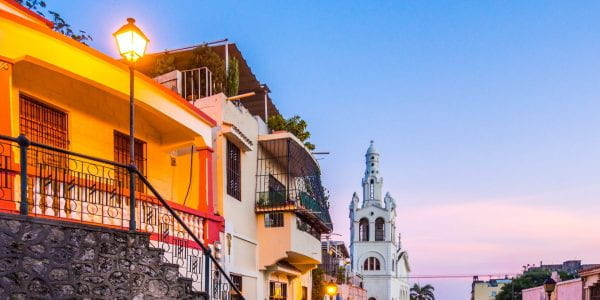This past May, I had the great fortune of getting to do my first study abroad trip to Japan. Equally, I find myself so fortunate to be in the midst of my second study abroad trip here in the Dominican Republic. Both trips thus far have awarded me with enriching experiences that are broadening my global perspective.
Today, I was unexpectedly reminded of my time in Japan when we visited the Botanical Gardens of Santo Domingo. In the middle of the native fauna and flora was a lovely Japanese garden. Everything was so distantly familiar: the bamboo, bonsais, stone zen statues, and white pebble walkways. The garden seemed so out of place, but I felt right at home.
I took a picture of Pounce in front of the red archway and thought about how confusing it would be for family when I reveal that the picture was taken on my trip to the Dominican Republic, not Japan. This thought led me to begin reflecting on my past and current experiences in the two drastically different cultures.
The Dominican Republic is a land of passionate expression. Whether it is expressing admirations or frustrations, the Dominican culture does not shy away from saying what they think. In Japan, the people are very modest and reserved. A common custom is to cover one’s mouth when laughing to avoid making too much noise in public.
While both countries starkly contrast in expressiveness, a commonality they share is their hospitality. In both a Japanese and Dominican home, anyone who is a friend of a friend is immediately family. For example, in Japan, showing signs of respect is how they show their hospitality. This includes serving tea, sweets, or foods that have been specifically chosen to take into account the needs of the receiving person (chilled tea and saltier, pickled foods on a hot day versus rich sweets and warm soups on a cold day) and being bowed to. In the Dominican Republic, showing love through strong embraces, kisses on the cheek, and large traditional meals is how they express hospitality. Nonetheless, in both countries, one is always welcomed which is always wonderful to experience.
Now I hate to talk trash, but man is there a lot in the Dominican Republic! The streets here are piled with litter and the trashcans are overflowing with garbage that has been neglected by sanitation. Contrastingly, Japan has been the cleanest place I’ve ever been to in my life. There was not one wrapper, chip bag, crushed can, nor piece of gum in site (shout out to all of the cities in the US!!). The craziest part? There were also NO public trashcans in Japan. Mind blown.
On a similar note, almost every car in Japan was a tiny, electric car that quietly and slowly drove up and down the narrow streets of Japan. In the Dominican Republic, almost every car is dented, worn, and fuming black smoke as they zip in and out in a chaotic fashion down roads that are hardly lined (and usually ignored). A unique characteristic of Dominican transportation is the “motoconchos” which are motorcycles/dirt bikes that are taxi services for locals. Men, women, and children can all be seen on the back of a motoconcho zipping in and out of traffic towards their destination. If you want to get somewhere quickly in the DR, the motoconcho is the way to go. If you want to get somewhere quickly in Japan… just be patient.
The radio will not be able to save you in Japan. Music was rarely heard in the country unless inside of a supermarket (where surprisingly SPANISH music would play even though it did not sell Spanish foods) or at a train stop (where a cartoonish chime would play at every stop). Likewise, the only noises on the streets of Japan were from the eerie jingles reminiscent of ice cream trucks that played from the speakers of pocket-sized garbage trucks. Other than that, no cars could be heard playing music and no honks were blared EVER.
However, the Dominican Republic is rich with sounds. Whether it is the rooster’s morning crow(s), cats howling in alleys, dogs barking, people advertising produce on their food carts, or the symphony of car honks and radio blasts, the mornings and evenings are never remiss to be filled with unique mixtures of sounds. Likewise, every square inch of the country is filled with music. The stores, the homes, the streets, the restaurants, etc. all play melodies of Spanish music old and new. It is that very music that will always hold a special place in my heart.
Both countries have been such great experiences. As lovely and refreshing as Japan was, the Caribbean will always be my home from home. Sure, Japan has its cute quirks, but I am certainly biased towards my heritage. There is still a lot of work to be done in the Dominican Republic (and all of the Caribbean), but I hold my hopes high that this country may prosper and flourish like the flora and fauna in the Santo Domingo Botanical Garden.







